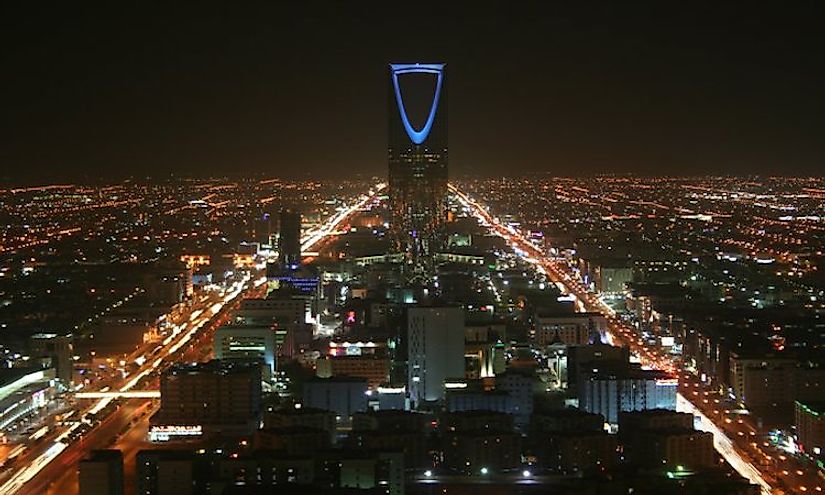The Economy Of Saudi Arabia

The economy of Saudi Arabia is predominantly oil-based with the government controlling most of the economic activities in the country. The government is encouraging citizens to invest in the private sector to reduce the overreliance on oil industries and to diversify the economy while at the same time creating employment opportunities.
Overview Of The Economy Of Saudi Arabia
Saudi Arabia has a GDP of $1.679 trillion and a nominal GDP of $752.500 billion, a GDP growth rate estimated at 3.6% in 2014 and projected to be 2.0% in 2017. GDP per capita was estimated to be at $55,400 in 2015. The industry has the highest contribution to the GDP at 60.4%, services at 36.4% and agriculture at 3.2%. The country has an inflation of about 3%. Agriculture employs 6.7% of the population, services employs 71.9% of the country’s population, and industry 21.4% and the country has an unemployment rate of 11.4% while the employment rate is at 12%. Saudi Arabians living below the poverty line are estimated to be between 12.7% and 25%. Saudi Arabia uses the Saudi Riyal as the currency and about 80% of the labor force is foreign. The country generates estimated revenue of $162 billion against $260 billion expenses leading to debt accounting for 9% of the GDP. The gross external debt was estimated at $127.4 billion in 2012.
Leading Industries Of Saudi Arabia
The petroleum sector is the major industry in the country contributing about 92.5% of the national revenue, 55% of the GDP and 97% export earnings. The largest oil company in Saudi Arabia is the Saudi Aramco that produces about 95% of the total oil in the country. The oil based industries in the country include the production of oil, refinery of petroleum, industrial gas, petrochemicals, caustic soda, ammonia, and other non-petroleum based industries such as cement, fertilizers, commercial aircraft repair, commercial ship repair, metals, and construction. The private sector contributes 40% of the GDP.
Top Export Goods And Partners
Revenue worth $224.6 billion is raised from exports. The main export products include petroleum and petroleum products accounting for 90% of the total exports. The major export partners to Saudi Arabia are China buying 13.1% of Saudi Arabia’s total exports, Japan takes10.9%, the US takes 9.6% of all exports, India 9.6% of all exports and South Korea 8.5%.
Top Import Goods And Partners
Saudi Arabia spends about $136.8 billion in Imports only. The major imported goods to the country include machinery and equipment, chemicals, textiles, motor vehicles, and foodstuffs. Major import partners of Saudi Arabia include China whose product constitute 13.9% of all the Saudi Arabia’s imports, US represents 12.6%, and Germany represents 7.1%, while South Korea, India, Japan, and the UK represents 6.1%, 4.5%, 4.4%, and 4.3% respectively.
Challenges Faced By The Economy Of Saudi Arabia
The economy of Saudi Arabia faces some challenges including the overdependence on oil. The oil reserves are gradually decreasing while no new reserves are discovered thus threatening the stability of the economy. Lack of freedom and slow social and economic development has put out a large number of citizens from employment in the major industries. The slow growth is also attributed to poor education, lack of opportunities for women and biased selection of qualified workers.
Future Economic Plans
Saudi Arabia intends to invest in large petrochemical industries including the Ras Tanura refinery and petrochemical project, Saudi Kayan petrochemical complex, and the Petro Rabigh refinery. The investments are estimated to consume about $46 billion and employ more than 150,000 people. Saudi Arabia also plans to launch six economic cities to create more employment opportunity and diversify the economy.











